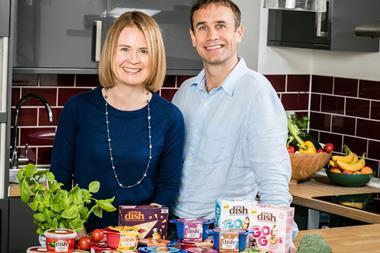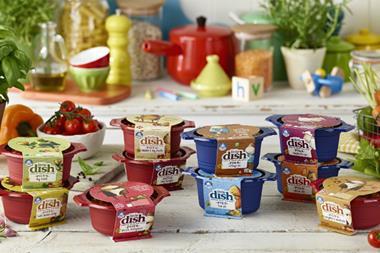Juggling toddlers, a turkey and a tangled mess of fairy lights, Asda’s vision of an exhausted supermum in its 2012 Christmas ad bombed. Watchdog ASA fielded over 600 complaints of sexism and Mumsnet forums were on fire. “Maybe Asda Mum killed her lazy-arsed husband and is putting her feet up in prison letting someone else do the work for a change,” one poster moaned.
Asda apologised. Yet three years on brands and retailers still haven’t learnt their lesson, according to research revealed by Mumsnet and Saatchi & Saatchi at the annual Mumstock conference last week. It said just 19% of mums can name a single piece of marketing they can relate to. So how is fmcg getting it so wrong? How can it do better? And why is it so important for the industry to master marketing to mums?
Currently, marketeers divvy up mothers into a few clichéd categories that oversimplify the 18 million women in the UK with children, according to Carrie Longton, co-founder of Mumsnet. “Just like a fashionista can spot a fake Mulberry from 20 paces, mums will soon cotton on if your marketing isn’t based on an authentic understanding of their lives,” she says. “A lot of the briefs we see aim to simplify life when it comes to mum, or simplify mum full stop.”
‘The identikit mum’ condensed into a few categories persists even among the big four. Asda still splits customers into six simplistic groups based on age, ethnicity, and demographic, according to CEO Andy Clarke, while Sainsbury’s CEO Mike Coupe admits ‘hectic households’ and ‘confident cooks’ are among the nine ‘shorthand’ family types discussed in the boardroom.
Mumsnet and Saatchi & Saatchi have abandoned these top-down categorisations in favour of a close look at thousands of threads and conversations between mums across the UK’s most popular parenting websites to analyse how they grouped themselves. “None of them were millennial mums,” laughs Richard Huntington, strategy officer at Saatchi & Saatchi. “There were no helicopter mums, value-conscious mums or tech-savvy mums.”
Instead mothers split themselves into 66 nuanced identities. Cheating partners, c-sections and parenting with a disability were all ways in which they grouped themselves, along with those running a start-up business, home schooling or those who used a surrogate. Of nearly 2,000 mums surveyed, each identified with six of these categories on average. Breastfeeding and natural births were the most common, and bringing up twins or multiples was the most “intensely felt” identifying trait.
For fmcg this granular insight into the mind of mums provides marketers with “gold dust” Huntingdon believes. For example, if you speak to the 2.3 million women who currently identify as mums with a single child, he explains, “the thing that most pisses them off is the way access to true value is defined by volume, which forces them to either waste money or waste food” he says. Sainsbury’s decision to ban multibuy deals last month “is a start” but “as a marketing community it feels like when it comes to product, packaging, promotion and ticketing, we’re way off the pace”.
Data increasingly available on consumers is slowly changing that, says Coupe, as “we’re getting better and better at personalising the way we interact with our customers”. Already, data gleaned from Sainsbury’s Nectar loyalty card programme has flagged up the prevalence of new mums among first-time online shoppers and the products they buy. The next step has been to “enhance that experience and anticipate the baby is now six months old.” That”relentless focus on detail” will happen “increasingly over time,” he adds.
Already the retailer is adding to that data by trialling Smart Shop technology in two of its stores, which allows shoppers to scan items on their mobile phone and avoid checkouts altogether. The digital shopping list generated is another piece of data “currency” for supermarkets, explains Coupe.”That kind of insight for the individual is terribly important and allows us to anticipate your needs,” he adds.
Asda is also “mindful” of segmenting customer types further using its own data, says Clarke. “There’s more opportunity to be more defined in terms of how we market.”
Of course, costly tech and big data may not be viable for smaller brands or retailers. Instead they can avoid lazy stereotypes by either using parental knowhow within their organisation or engaging mothers directly in strategic decisions, adds Longton. Both approaches were taken by children’s brand Little Dish to grow penetration of its chilled ready meals. “We’re no good at big data, we can’t afford it and that’s quite liberating,” says marketing director Charlotte Tisdall.
Instead the small brand team, most of whom are parents, used gut instinct and talking directly to mums in their customer base to identify guilt as their biggest challenge in boosting sales. “Parents want to feed their children well but might lack time, skills, nutritional knowhow or occasionally inclination,” adds Tisdall. “Those parents need some help some of the time but there is an inherent guilt in choosing a ready meal.”
As a result the brand has added nutritional ‘Good To Knows’ on packaging and worked with a dietitian to build educational material into its website. The other change is one of language. “We found that emphasising ease for mums actually reinforces feelings of guilt,” says Tisdall. “You risk implying laziness. By reframing this to ‘helping with busy family life’, the very simple change in language began to address this.”
Mums are keen to collaborate with brands in this way, adds Longton. “Mums want to get involved, they have great ideas and they care deeply about brands,” she says. “It’s a bit scary, and for goodness sake don’t let them in if you’re not going to listen, but they’ll love it and they will love the brand if you allow them to influence your product or your marketing.”
Word of mouth
They’ll also tell their friends, says Sue Macmillan, chief operations officer at Mumsnet. “Mums more than other groups go to other mums for recommendations,” she says, and peer-to-peer marketing should therefore be top of the agenda among brands and retailers.
Working with parenting forums such as Mumsnet is one route. “We facilitate brands getting that one-to-one conversation going,” adds Macmillan. The site generates over 85 million page views per month with mums sharing tips on topics as far reaching as pregnancy cravings, potty training and polyamorous parents.
Recruiting brand ambassadors is another option, one taken by children’s bathroom brand Child’s Farm. Qualitative research the brand commissioned in 2015 revealed word of mouth was the most important influence on purchasing decisions among mums, says founder and CEO Joanna Jensen. “That has really influenced our strategy, a lot of which is now based on sampling,” she says. “We principally do that through our brand ambassadors - men, women, grannies that are dotty about the brand. They share, do sampling and coffee mornings making sure our products get out there with their own recommendation.”
The same approach works in the digital space, with 44% of mums making a purchase after a friend liked or posted about a brand on social media, according to Coca-Cola Enterprises. The firm used that insight to trial social shopper marketing with Capri-Sun in 2014.
“We’ve used social influencers and their significant followers to create shopper media that educates, informs and ultimately impacts consumer decisions at the point of purchase,” says digital director Simon Miles. The activity generated 2,140 pieces of content, 1.6 million blog page views, and 10 million campaign impressions for Capri-Sun Crush as a result.
Successfully marketing to that many mums ultimately equals more cash for a business. Research by parenting forum Baby Centre found that 80% of all shopping decisions are still made by mothers in a household, two thirds of whom shop completely differently across all categories once their first baby is born.
And only a fraction can relate to the frazzled domestic mum in Asda’s 2.4 Christmas family. “The nuclear family doesn’t exist any more and there are many different and increasingly complex relationships that exist in families,” Coupe sums up. “And those who are able to best join those relationships together will win.”
Don’t risk losing the women of tomorrow
Millennial mums don’t think or shop like their mothers before them and brands that fail to adapt to this new generation risk losing the biggest spenders of tomorrow, according to a report by Nielsen. These 16 to 34-year-olds are “digital natives” and shaped by their upbringing in a recession-hit Britain. Ninety per cent own smartphones, nearly two thirds are obsessed by low prices and they’re more likely to buy groceries online than any other consumer. So what actions can brands or retailers take to appeal to them?
- Fulfil a need: Millennials look for breakthrough innovation that resolves a practical need. That means understanding what causes them stress, confusion or inconvenience in the first place
- Grab their attention: Females respond better to marketing anchored in emotion such as imagery, social connections, collaborative language and positive messaging
- Focus online: Leverage the fact that millennials are the most avid online shoppers. But remember women are more dispersed and harder to find online than men. Use a defined audience segment (eg female, age 18 to 34, heavy buyers of shampoo) over a scattergun approach in order to more accurately reach them online
- Make it easy: Millennials increasingly opt for online over in-store because it saves them time. To tempt them back to bricks and mortar, retailers could therefore explore childcare, an in-store gym, valet parking benefits or a free magazine to keep children amused during the shop
- Price it right: Millennial mums say they don’t want to rely on promotions to get good value. Getting the regular shelf price right is crucial. However they do love money off coupons, the more personalised the better



















No comments yet